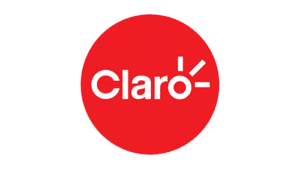In our latest blog, Clara Jezouin considers the gaming industry and how the need to protect pre-release content sits alongside the new opportunities created by technologies such as blockchain, NFTs and the role of the metaverse. She also discusses how NAGRA and the wider Kudelski Group are responding to both today’s and tomorrow’s gaming security needs.
Introduction
As the gaming industry launches new titles, influencers and streaming platforms are a significant part of the launch. Partnering with creative gamers provides crucial exposure in a crowded landscape, meaning referrals and third-party promotion are essential to driving new title appeal. Sharing gaming footage under embargo before the official release drives traction on upcoming game releases and energizes the community of content creators and fans.
As gaming studios move their platforms online, new challenges have emerged such as a constant threat of cybersecurity attacks. The most common gaming security issues are pre-release content leaks from insiders (working at the gaming company or at creative agencies), from VIP fans or disclosure of player information, and cyber-attacks. These issues directly or indirectly lead to economic losses for gamers and game studios. It is therefore crucial to improve the stability and security of both the network and gaming ecosystems to maintain the user experience, especially when we consider pay-to-earn, NFT and crypto-currency driven communities.
Detecting Content Leaks from the Outset
When releasing new gaming titles to the market, marketing strategies require a solution that enables the secure distribution of pre-launch footage to influencers. There are risks to this valuable advertising channel, as any leaks can interfere with planned marketing activities and impact other fans’ experience waiting for the new game’s release. Often, pre-release leaks create a situation where the noise of the release overshadows the excitement of the game experience.
NAGRA NexGuard Forensic Watermarking equips leading gaming studios with the tools to protect content and enforce the embargo of highly confidential pre-release trailers and features for upcoming game releases. NAGRA technology provides gaming studios with a solution that allows any leaks of the game’s pre-release short-form content to be traced, even if the footage has been edited, allowing rapid remediation. As these influencers use their social channels such as Tik-Tok, Twitch, and YouTube – being able to rapidly identify and quarantine content in these digital channels allows brands to gain the upper hand in these situations – or at least respond quicker than pure human identification allows.
While watermarking has a role in the protection of pre-release content, increasingly sophisticated online gameplay requires additional security technologies.
What’s Blockchain’s role in Online Gaming?
The blockchain can be a secure digital environment for game developers, as the transactions, data storage, and communications protocols use very powerful data encryption technologies like private-public key mechanisms to secure transactions and access to data. Due to its design, it is extremely difficult to compromise a decentralized blockchain network since there is no single server to destroy. Nodes support distributed databases in a shared manner, and each node may have complete information on its local copy of the chain. Game studios can operate in a potentially more secure environment when developing a game which uses blockchain technology. There is always a risky trade-off in this situation and any decision to remain centralized or use a decentralized blockchain should be run through a complete threat model and business requirements session.
Can the Blockchain be Owned by the Gamers?
Blockchain makes room for open communication between players and developers through concepts such as decentralized organizations, sometimes known as DAO’s. Game development on blockchain can be defined by a community approach, as opposed to a top-down approach. A player or another developer can propose an idea to improve a game. If the community agrees, improvements will be made. Often this focuses on in-game strategy, artifacts, or how a gaming ecosystem spends its earnings.
According to DappRadar, the blockchain gaming industry grew by 2,000% last year and attracted more than $2.5 billion in investments. One trend that is now visible, and accelerating, is that blockchain-based games allow value to be projected onto intangible assets, with NFT-based play-to-earn platforms and utility-based crypto-currency transactions being the likely victors.
The potential of a blockchain-based metaverse is immediate. Gaming studios like Microsoft, Google, Disney, and Sony are looking to expand their brands within the metaverse. The integration of NFTs and the financial ecosystem powered by crypto currencies are changing the traditional metaverse that is limited to virtual and augmented reality. Blockchain has completely restructured the gaming industry. It has created a multiverse and can allow cross-chain gameplay to become more personalized and more immersive.
Crypto currencies have gained a prominent place in the gaming industry, with leading gaming companies like Microsoft Xbox, Twitch and G2A now incorporating them. Crypto-currency games are evolving the gaming market by allowing players to earn money while playing. Gamers are excited by the idea of putting durable assets into play on a blockchain, whose concept offers a new gaming experience.
The objects in blockchain games may be real properties or real owned assets. Therefore, developers of blockchain games need to pay special attention to the issue of security. With blockchain, users have more control over their gaming experience, opening the door to it being efficient, secure, and transparent when transacting digitally and accessing virtual assets. Players benefit from greater clarity in earning assets, while developers can mitigate intellectual property risks.
In this evolving industry, we are still seeking answers. Cross-border intellectual property rights are still being determined. Even if both parties can be protected by the laws in their respective countries, are the laws of “code” on the blockchain able to directly instantiate those of their local law? Do games, blockchains, or cryptocurrency entertainment transactions must enforce these laws to ensure that players are on the right side of gaming activities legally? Intellectual Property, Ownership, & Cybersecurity safety are all decision points in this journey toward a multi-player decentralized future.
Securing the Level-Up Advantage
To distribute gaming content efficiently worldwide, a comprehensive security strategy is required. At NAGRA, NexGuard Forensic Watermarking is already addressing those needs either by itself or as part of our wider Active Streaming Protection framework which protects both the pre-release assets and allows game influencers the required creative freedoms. NAGRA NexGuard solutions provide a strong deterrent against internal and external leaks while securing maximum exposure for upcoming releases.
Any move toward blockchain, NFT, or decentralized gameplay should come with a plan to consider the risks of theft, player safety, and protection of in-game experience. A threat model conducted by our sister company Kudelski Security is often the first step.
Delivering online gaming, including an increasing focus on the metaverse has sophisticated requirements. As a committed innovator in the market, NAGRA and its sister company Kudelski Security are actively working with organizations who are opening the metaverse and exploring how these new security technologies are able to maximize gaming visibility and minimize the associated risks. Our blockchain center of excellence can advise on the full journey. From a secure development lifecycle, to conducting a full risk and threat analysis of the system, to reviewing the deployed code – the Kudelski Security team partners with NAGRA technology as the only company in the media and entertainment vertical to bring this level of comprehensive solutions to the ecosystem.
Digital Artifacts, Intellectual Property, tokens, and the exchange of value will be pervasive throughout the future of gaming and it’s important for brands to consider each aspect seriously.
If you would like to discuss any of the aspects I have covered above further, we would love to continue the conversation! We have our content and cybersecurity specialists on hand to chat through your challenges and see how we can take your gaming security to the next level.























